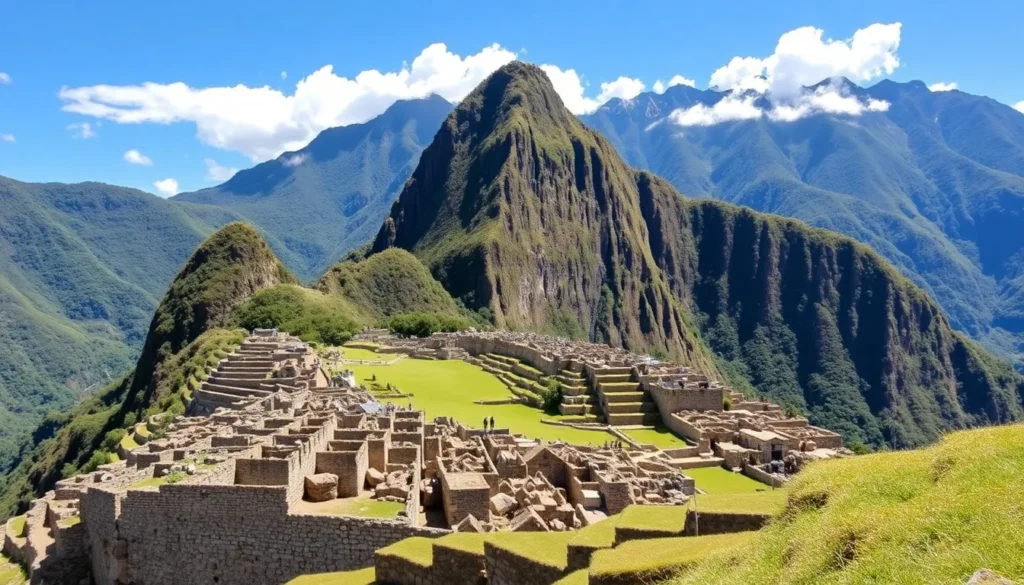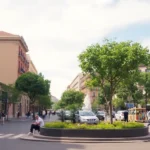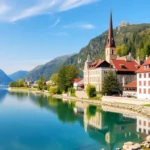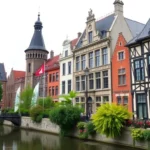Top attractions to see in the Sacred Valley of the Incas in one day

Nestled in the breathtaking Andes region of Peru lies the Sacred Valley of the Incas, a land rich in history, culture, and natural beauty. This remarkable valley serves as a testament to the ingenuity of the Inca civilization and offers travelers an unforgettable experience. Are you curious about what awaits you on a one-day excursion in this enchanting part of Peru? Let’s explore the wonders of the Sacred Valley together and discover everything you can see and do in this must-visit destination.
From ancient archaeological sites to vibrant markets, the Sacred Valley is a treasure trove of experiences. Spoiler alert: you’ll witness some of the most impressive archaeological sites in the country, all while soaking in the breathtaking landscapes that surround them.
Visiting the Sacred Valley: Organized Tours vs. Independent Exploration
When it comes to exploring the Sacred Valley, travelers essentially have two choices: joining an organized tour or venturing out on your own. Each option has its own set of advantages and disadvantages, so let’s take a closer look.
✓ Organized Tours of the Sacred Valley
For those with limited time who want to maximize their experience, an organized tour is an excellent choice. Tours typically use minibuses accommodating between 15 and 25 people, departing from Cusco and stopping at various key sites along the way. You can opt for a shorter version or go for the full experience, which includes the Salt Mines of Maras and the agricultural terraces of Moray.
These tours are generally quite affordable, ranging from about €20-25, and can be booked through local agencies or online platforms like Civitatis.
⭐ This is one of the best excursions from Cusco, and we can’t recommend it enough!
Pros and Cons of Organized Tours
+ One of the biggest advantages is having an expert guide who will share invaluable insights into Inca culture. You’ll visit the most significant archaeological sites without wasting time on logistics.
– However, the downside is the lack of freedom to spend extra time at places that capture your interest or to choose your own pace and dining options.
Tip: If you plan to visit Machu Picchu after your time in Cusco, consider asking your guide to make Ollantaytambo your last stop. This way, you can leave your luggage there and continue your journey without returning to Cusco.
✓ Exploring the Sacred Valley Independently
Many travelers prefer to explore the Sacred Valley independently, allowing for a more personalized experience. While this approach can be rewarding, it typically requires more time, energy, organization, and a higher budget.
Attempting to see the valley in a single day will likely involve negotiating with a taxi and foregoing a guide. This can lead to a similar or even slower pace than a tour while potentially costing more without the educational insights.
If you choose this route, consider ending your day in Ollantaytambo, where you can spend the night and catch the train to Aguas Calientes (the gateway to Machu Picchu). This itinerary can save you both time and money.
For the best experience, allocate several days to explore the Sacred Valley. Setting up a base in towns like Urubamba or Ollantaytambo can be a fantastic way to soak in the local atmosphere. Alternatively, you might find charming rural accommodations along the Vilcanota River, such as the Mountain View Maras.
From Cusco, there are direct buses to Ollantaytambo, Urubamba, or Pisac. For example, the Pisac to Ollantaytambo route is serviced by local buses that stop at various towns in the valley for just a couple of dollars. However, keep in mind that some archaeological sites are a bit removed from these towns, so you’ll need additional transportation to reach them.
Pros and Cons of Exploring Independently
+ The primary benefit is the freedom to explore off-the-beaten-path locations without the constraints of a schedule. This flexibility can make your experience much more enriching.
– On the flip side, this independent journey may end up being more expensive and requires careful planning and several days of your travel itinerary.
Don’t forget that the Tourist Ticket is essential for accessing the Sacred Valley. The comprehensive 10-day ticket (130 soles) allows you to visit the main attractions in Cusco as well as sites in the Sacred Valley. You can purchase it at the entrances of all the locations.
Places like Pisaq, Ollantaytambo, Chinchero, Maras, and Moray are must-see stops in the Sacred Valley, but you’ll also be treated to stunning Andean landscapes, traditional markets, timeless villages, and fluffy alpacas, all set against a uniquely mystical backdrop.
Key Stops to Explore in the Sacred Valley
As you journey through this enchanting valley, here are some key stops that you cannot miss:
✓ Chinchero
This village is historically significant as it was where Inca Emperor Túpac Inca Yupanqui established his residence, likely due to the stunning scenery. You can still see the terraced structures and massive walls that the Spanish repurposed for their colonial buildings, including the Iglesia de Nuestra Señora de la Natividad.
Notably, the mural on the main facade tells the story of the area, depicting a puma conquering a serpent, symbolizing the victory of the Viceroyalty over the revolt of Túpac Amaru II.
Chinchero is also known for its high-quality textiles, and many visitors enjoy shopping at artisan workshops where local weavers showcase their craft. Although it’s somewhat touristy, it’s a positive experience that gives insight into local culture.
✓ Pisaq
Perched high in the mountains overlooking the Vilcanota River, the ruins of Pisaq are an important Inca settlement. The archaeological site features extensive terraces that the Incas used for cultivating potatoes, quinoa, and corn.
Beyond the terraces, you can wander through the remains of temples, houses, and streets. Look closely at the mountain behind the site to spot artificial cavities or niches, which served as the largest cemetery in the Inca Empire.
✓ Ollantaytambo
Continuing downstream, you’ll arrive at the crown jewel of the Sacred Valley. Ollantaytambo resembles a mini-Cusco, serving as a key stop for expeditions to the capital. It functioned defensively, ceremonially, administratively, and agriculturally during the Inca period.
Strolling through its cobblestone streets, enjoying a mate in the main square, or visiting the local market are all wonderful ways to immerse yourself here. However, the highlight is undoubtedly the legendary Temple of the Sun, which, despite being unfinished, boasts massive stones and stunning views of the valley.
Be prepared to climb some stairs to explore the archaeological site fully. Additionally, Ollantaytambo houses the Pinkuylluna archaeological site, which once served as a food storage facility. While this site may not be included in the one-day tour, you can hike up to it if you explore independently.
✓ Maras
Although not directly linked to the Inca civilization, Maras is famous for its stunning Salt Mines. This network of over 3,000 salt pools is unique in the world and produces high-quality pink salt exploited by the local community. Entrance to the viewpoint costs 10 soles (not included in the tourist ticket), but it’s well worth the visit.
As you walk through the town of Maras, pay attention to the intricately carved door lintels that adorn many buildings, many of which are centuries old. You can even spot coats of arms of the original owners.
✓ Moray
No visit to the Sacred Valley would be complete without exploring Moray. This archaeological site serves as an extraordinary example of Inca agricultural innovation. The circular terraces were designed as experimental agricultural laboratories.
The Incas created distinct microclimates at different levels of the terraces, allowing them to test and determine the best conditions for various crops. Fascinating, right?
Some theories suggest that the concentric circles represent the maternal womb, emphasizing their significance in Inca culture. Moray features four of these unique formations, one of which is well-restored while the others are in various stages of restoration.
Essential Tips for Visiting the Sacred Valley
Before embarking on your adventure, keep these crucial tips in mind:
- All sites visited during a tour are located at high altitudes (above 3,000 to 3,500 meters), so it’s essential to acclimatize in Cusco for a few days before your trip.
- The best time to visit the Sacred Valley is during the dry season (March to October).
- If you have the opportunity, consider staying in a hanging glass capsule for a unique experience; it might sound thrilling and a bit scary at the same time! Check out the Skylodge.
- Be prepared for a long day with an early start; bring extra batteries for your camera, a power bank for your phone, water, and some snacks to keep you energized.
- Always keep your tourist ticket secure; we panicked thinking we lost ours at one point!
Map of the Sacred Valley Excursion in Peru
Here’s a map showcasing all the points of interest you can visit in the Sacred Valley of the Incas:
Are you now more clear on how to embark on a Sacred Valley excursion and everything you can see and do in this magical corner of Peru? If you still have questions, feel free to leave us a comment!
Stay updated on our journey through Peru by checking out our Instagram stories.
Aquí hay algunos consejos útiles para tu viaje:
| Save on Your Trip |
| Find cheap flights to Peru here |
| Book accommodation at the best prices here |
| Reserve activities in Spanish in Peru here |
| Get a 5% discount on your IATI travel insurance here |
| Book airport transfers here |
| Learn how to withdraw money without fees here |
| Get a 5% discount on your eSIM from Holafly here |
| Rent a car at the best deals here |
| Check out the best books and travel guides here |
| Explore all our articles about Peru |





Deja una respuesta